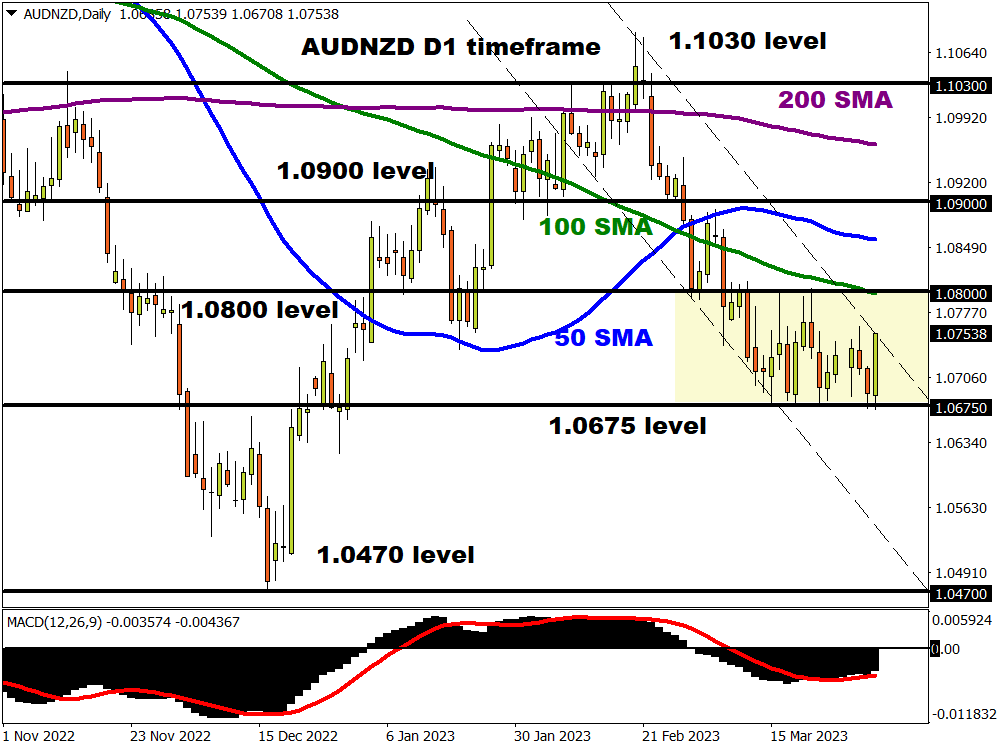Following the OPEC+ shocker overnight, commodity currencies have rallied against the New Zealand dollar.
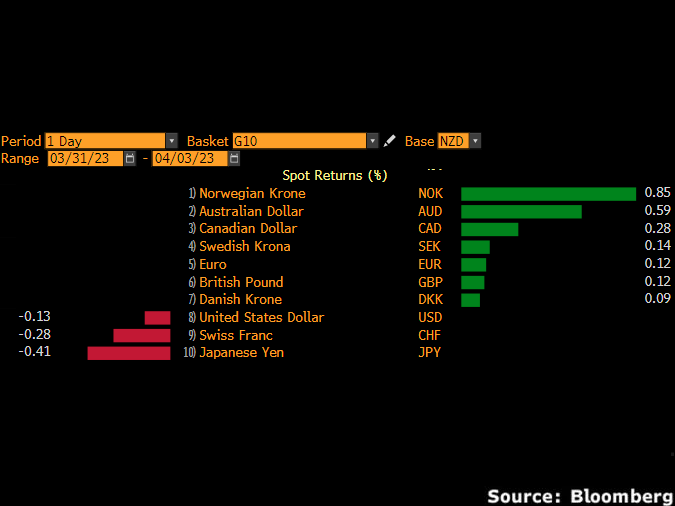
Given the cartels decision to lower oil output by over 1 million barrels per day starting from May, that promises more support for the likes of AUD, CAD and NOK in the months ahead.
However, for the rest of this week Antipodean central bank action could inject more volatility for AUDNZD.
This Antipodean central bank action could also offer a break from the dollar ahead of Friday’s US jobs report.
Investors will be served a central bank combo this week featuring the Reserve Bank of Australia (RBA) and Reserve Bank of New Zealand (RBNZ). There are mixed expectations over what to expect from the RBA while the RBNZ is expected to hike rates by 25 basis points. But before we take a deep dive into how the pending central bank decisions could play out, it is worth keeping in mind that the aussie weakened against most G10 currencies in Q1 2023.
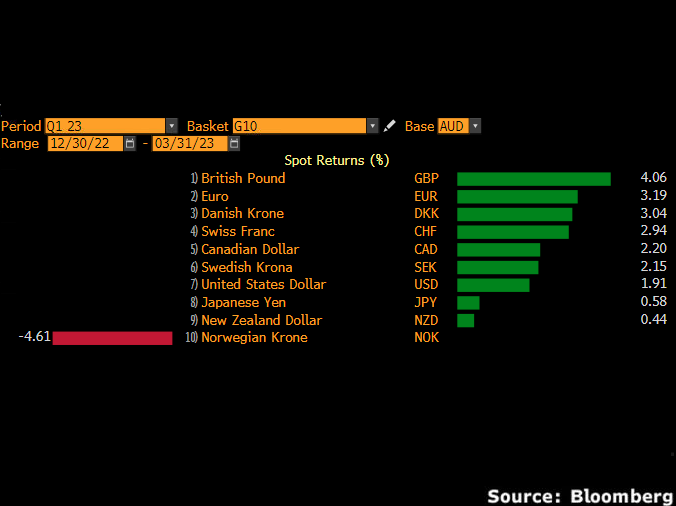
It was a similar theme for the New Zealand dollar which weakened across the board.
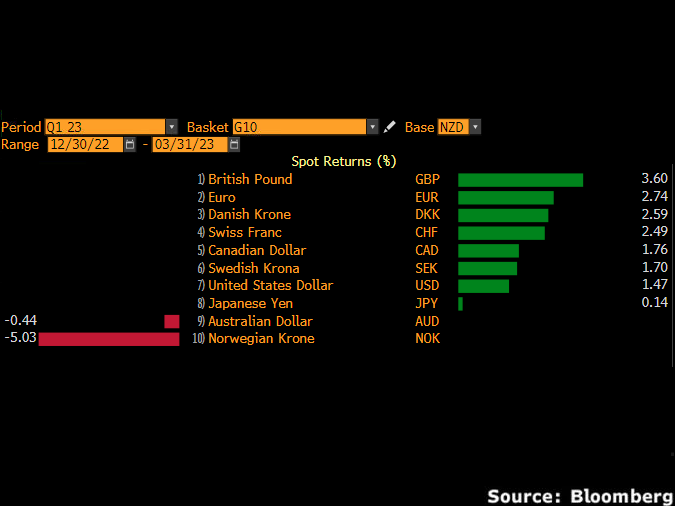
Taking a brief look at the technical picture, the AUDNZD remains trapped within a range on the daily charts with support at 1.0675 and resistance at 1.0800.
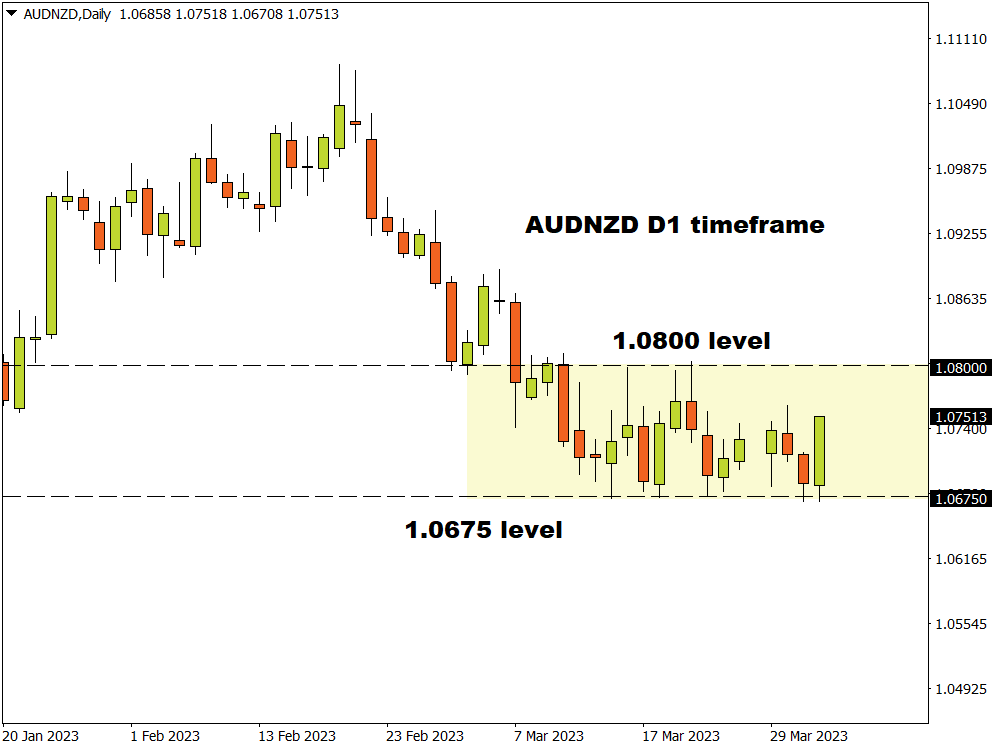
Zooming out, the weekly charts look like a choppy affair with another layer of resistance found at 1.0900 and key support at 1.0470. The current price action suggests that the AUDNZD could be waiting for a fresh fundamental catalyst to make its next big move.
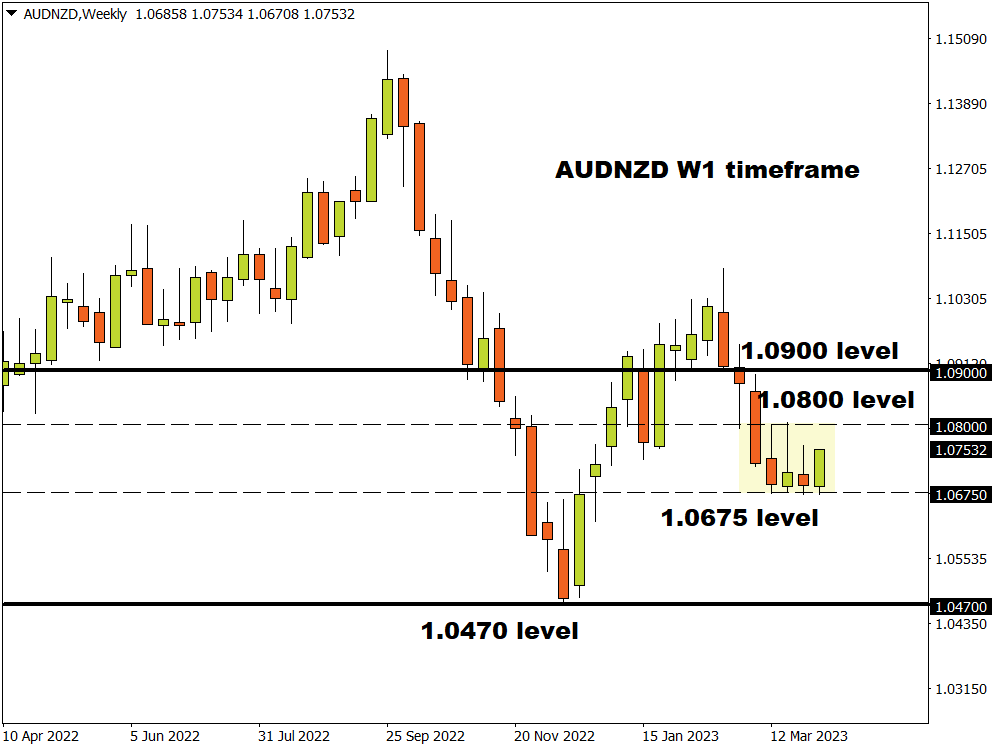
What to expect from the RBA on Tuesday?
Expectations remain split on whether the RBA will hike interest rates by 25 basis points or leave them unchanged. If the central bank opts for the latter, this will be the first pause since lifting interest rates in May 2022.
It’s been an incredible run for RBA hawks with rates rising by 3.5% in ten straight hikes between May last year and March 2023. However, the party could be coming to an end thanks to slower-than-expected inflation and repeated signs of slowing economic growth. On top of this, the recent market turmoil following the collapse of 3 US banks and the Credit Suisse drama have strengthened the argument for a potential pause. Given the rising unemployment and weak growth, the central bank is likely to adopt a cautious stance regardless of whether rates are hiked or left unchanged. The key question is if this meeting will mark the end of the hiking cycle. The Aussie could be in store for a world of pain if the RBA stands pat on rates, strikes a cautious note, and signals that the next move may be a rate cut.
RBNZ expected to hike rates
Markets widely expect the Reserve Bank of New Zealand to hike interest rates for an 11th straight meeting in the face of hot inflation.
However, the bank is seen slowing the pace of monetary tightening – hiking by just 25 basis points as it focuses on inflation and risks from a global banking crisis. We could witness a tug-of-war between RBNZ hawks and doves due to various fundamental forces. Hawks could draw strength from potential severe weather conditions causing disruptions and feeding short-term inflation pressures. However, signs of slowing growth and somewhat stabilizing inflation may keep doves well-equipped and ready to battle. The New Zealand dollar could depreciate if the central bank moves along with a dovish hike, citing concerns over domestic and global economic conditions.
AUDNZD in breakout mode
The AUDNZD has been trapped within a range since early March. On the daily timeframe, prices are trading below the 50, 100, and 200-day Simple Moving Average (SMA) while the MACD trades below zero. Zooming out on the weekly charts, the trend is turning bearish thanks to the consistent lower lows and lower highs. However, the support at 1.0675 has halted bears in their tracks for the past four weeks.
A major breakout could be on the horizon with the pending central bank decisions acting as fundamental sparks. A strong daily close above 1.0800 could inspire an incline towards 1.0900 and 1.1030, respectively. If prices are able to break under 1.0675, this may open a path toward 1.0470.
